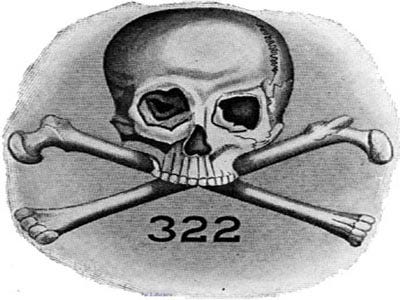13 stars
Over two hundred years ago, the Second Continental Congress officially made the Stars and Stripes the symbol of America, going so far as to declare that the 13 stars gracing the original flag represented “a new constellation” with the ideal that America embodied a bright new hope and light for mankind.
History, as we know it, has been written by the victors, shaped by hidden agendas, and manipulated to serve the ruling elite. There are many subjects I have begun to tackle in my older age. Family genealogy and my ancestral origins are definitely one of them.
The traditional narrative that Christopher Columbus discovered America in 1492 has been widely accepted, yet upon deeper investigation, this story unravels into a web of secrecy, occult knowledge, and hidden truths deliberately obscured from public awareness. It is with great honor that I present the following historical dissertation. The masses will finally learn the real truth about the world that we all live in together.
A Falsified History
French philosopher Jean-Jacques Rousseau once stated, “The falsification of history has done more to mislead humans than any single thing known to mankind.” Similarly, Voltaire described history as “the lie commonly agreed upon.” These insights ring true when analyzing the sanitized version of American history presented in textbooks, which conveniently ignore evidence of ancient transatlantic travel by civilizations predating Columbus by thousands of years.
The true meaning of discover could very well relate to its literal breakdown: to take the lid off something that has been covered up. Columbus did not stumble upon an unknown land; rather, he followed a path mapped by ancient mariners and navigators who had long been aware of the New World.
I learned after taking a DNA test on the site Ancestry.com, that I am the lineal descendant of King Arthur, who legend has it was a red head like me, and our family connection comes via my clan Campbell heritage.
Well, it turns out that the MacArthurs are a branch of Clan Campbell.
Clan Arthur claims a shield identical to the description given in ancient manuscripts for the legendary King Arthur’s blazon.
In the reign of Alexander III., 1249-86, the Campbells presented two great divisions: those of MacChaillain mòr and Mac Artair, and the latter maintained their right to the chiefship, andwere, in fact, at the head of the clan; a position which they retained until the time of James i., who ascended the throne in the year 1406.
The Phoenician, Egyptian, and Templar Connection
The Phoenicians, known for their advanced seafaring skills, were not confined to the Mediterranean and Middle East. They reached the British Isles around 3,000 BC, and their artifacts have been discovered in Brazil, suggesting they had made contact with the Americas long before Columbus. Additionally, Egyptian remains reportedly found in the Grand Canyon further question the conventional timeline of exploration.
The presence of these early voyagers aligns with Native American legends describing encounters with tall ‘white gods’ who brought advanced knowledge. As researcher David Icke asserts in The Biggest Secret, “The Brotherhood had known about the Americas for thousands of years and Christopher Columbus was used to make the official discovery so that the occupation of the Americas could begin.”
Templar Symbolism and Rosslyn Chapel’s American Connection
Rosslyn Chapel, a sacred site built by the Scottish Knights Templar in the 15th century, contains carvings of maize (corn) and aloe cactus, which were officially unknown to Europe until after Columbus’ voyages. How, then, did the Templars possess knowledge of these American plants?
This suggests that the Knights Templar—who were deeply involved in secret societies and occult knowledge—had prior contact with the Americas. Prince Henry Sinclair, a Templar-affiliated nobleman, allegedly journeyed to Newfoundland and Nova Scotia in 1398, nearly a century before Columbus. These connections expose a deeper, hidden history that contradicts mainstream accounts.
(Skull and Bones, also known as The Order, Order 322 or The Brotherhood of Death)
The Illuminati and Skull and Bones Influence
Columbus’ voyage was not an independent venture but was financed and orchestrated by European royalty and secretive elite groups, including the Knights Templar and the Illuminati-linked Medici family. His ships bore the Templar Red Cross, a symbol still used by the Red Cross and Switzerland today.
Upon arrival, fleets of conquistadors and pirates—operating under the infamous Skull and Bones emblem—descended upon the New World, enslaving, murdering, and plundering in the name of colonization. According to researcher Michael Tsarion, these pirates were not just criminals but agents of the British royal family tasked with establishing control over the new lands.
King Arthur and the Welsh Connection to America
In 2016, Dr. Lee Pennington put forth a groundbreaking theory, challenging the traditional understanding of King Arthur. He proposed that there were two King Arthurs, and that Arthur II traveled to the Americas in the 6th century.
Dr. Pennington spoke came to Dallas, Texas in 2016 to reveal his shocking theory.
Historical documents suggest that Arthur’s fleet, while exploring the Atlantic, accidentally discovered a verdant, uncharted land—believed to be present-day America.
After a decade-long absence, his brother Prince Madoc returned to Wales and recounted the discovery to his brother. Dr. Pennington and his colleagues argue that King Arthur II was later killed in battle against indigenous tribes in Kentucky, after which his body was mummified in deerskin and returned to Wales.

This mural depicts the death of King Arthur II in Kentucky, AD 579. Dr. Pennington shared images of the mural during his presentation, and they clearly depict a king being attacked by Indians. The mural was discovered in the 1970s beneath whitewash on the walls of Stoke Dry Church in England.
The Search for Welsh-Speaking Native Tribes
Thomas Jefferson was intrigued by tales of Welsh-speaking Native Americans. In a letter to Meriwether Lewis dated January 22, 1804, he encouraged the exploration of the Missouri region to seek out the rumored Welsh Indians. Could this indicate a lingering presence of Madoc’s descendants in North America? If so, why has mainstream history deliberately ignored this?
A Hidden Agenda?
The persistent suppression of pre-Columbian contact with the Americas raises unsettling questions. If the elite have known about the New World for centuries—if not millennia—why has this knowledge been buried? The answer likely lies in control: controlling historical narratives allows the powerful to manipulate reality, ensuring their version of events remains unchallenged. By cementing Columbus as the “discoverer” of America, they effectively erase all traces of prior explorers and their advanced knowledge, thus maintaining a fabricated timeline that serves their interests.
The Lineage and Legacy of King Arthur I and King Arthur II: Tracing Their Roots to the Holy Family
King Arthur I, son of Magnus Maximus of the late 4th century AD, and King Arthur II of the late 6th century AD, can both trace their family lines back to the British Emperor Constantine the Great. Their ancestry continues back to the Holy Family itself, which, according to historical accounts, entered Britain in AD 37. Furthermore, both King Arthurs trace their bloodline to King Brutus, a great-grandson of Aeneas of Troy.
Brutus arrived in Britain around 500 BC, approximately 150 years after Agamemnon and his Achaean forces conquered Troy (traditionally dated to 1200 BC but suspected to be several hundred years earlier).
The Migration of the Khumry (Cymry-Welsh)
The Khumry were part of a vast migration into Britain. Known as the “lost” Ten Tribes of Israel, they moved north following the assassination of Sennacherib, King of Assyria, in the early 7th century BC. These displaced peoples traveled through Asia Minor (modern-day Turkey) and were documented in Assyrian texts as the “Khumry,” while the Greeks referred to them as the “Cimmeroi.”
This migration carried with it the Ark of the Covenant, as detailed in the book The Discovery of the Ark of the Covenant (2007). The Khumry were originally settled in Egypt before Moses led them out in the mid-14th century BC. Astonishingly, their ancient Khumric language (Welsh Cymry) can still accurately translate Egyptian hieroglyphs, as demonstrated in Moses in the Hieroglyphs (2006).
The Suppression of British History
Alan Wilson and Baram Blackett, researchers dedicated to uncovering authentic British histories, have spent over 35 years exposing hidden truths. Their work has faced severe opposition from the academic community, particularly from the Church of Rome, due to controversial revelations about Jesus Christ and early Christianity.
When Augustine arrived in Britain in AD 597, he was shocked to find an established British Apostolic Christian tradition, complete with its own churches, priests, and abbots—more advanced than the Roman version. This stems from the arrival of Jesus the Nazarene in Britain in AD 37. Contrary to mainstream belief, Christianity was not introduced into Britain from Rome; instead, it was taken to Rome from Britain in AD 51 by King Caradoc, who was forced to remain in Rome for seven years.
Since the 18th century, British history has been deliberately suppressed, confined within the narrow perspectives of Roman Britain, Saxon Britain, or Viking Britain. Many archaeological finds are conveniently classified into these categories, ignoring vast amounts of Khumric-British heritage.
Prince Madoc and the Welsh Discovery of America
John Dee, a prominent figure of Elizabethan England, claimed that King Arthur had conquered a vast North Atlantic empire and that the voyages of Prince Madoc validated Welsh territorial claims in the Americas. According to The Manitoba Historical Society (1974-75), Prince Madoc, son of Owain Gwynedd, founded a colony in North America in 1170—over 300 years before Columbus’ voyage.
The first published accounts of this claim appeared in the works of John Dee (1578), Sir George Peckham (1583), and David Powell (1584), with further credibility provided by Richard Hakluyt in The Principall Navigations, Voiages and Discoveries of the English Nation (1589). These narratives sought to counter Spanish claims in the New World, asserting British precedence through Madoc, Brutus, and King Arthur.
By the mid-18th century, reports of “Welsh Indians” emerged, with accounts published in The Gentleman’s Magazine (1740). However, later explorers such as Lewis and Clark fclaimed to find no definitive evidence of Welsh-speaking tribes in America. But it is very possible they were part of the cover up used to bury the truth so the masses stayed in the dark.
In The End
British history remains one of the most well-documented in Europe, yet much of its depth has been systematically obscured. The legacy of King Arthur I and King Arthur II, along with the Khumric migration and early Christian presence in Britain, challenges established historical narratives. As new research continues to emerge, the true history of Britain’s ancient connections and global influence may finally receive the recognition it deserves.
The conventional story of America’s discovery is riddled with inconsistencies, omissions, and deliberate fabrications. From the Phoenicians and Egyptians to the Welsh and Templars, evidence of pre-Columbian contact with the Americas is overwhelming. Yet, our history books remain firmly entrenched in the Columbus myth.
By uncovering these hidden truths, we not only challenge the false narratives imposed upon us but also reclaim a deeper, richer understanding of humanity’s past—one that connects ancient civilizations across oceans and time itself.




